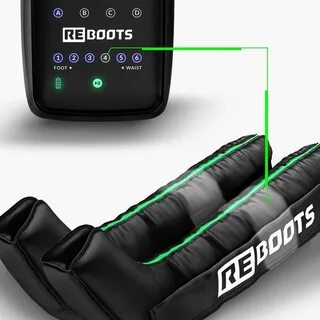BANT has long been a trusted framework for sales qualification. Representing Budget, Authority, Need, and Timeline, it helped sales teams focus on prospects with the highest potential. However, the modern B2B environment has transformed dramatically. Buyers are more informed, decision-making involves multiple stakeholders, and technology provides deeper insights than ever before. As a result, BANT has changed significantly and must be adapted to remain effective.
Modern Buyers and Self-Guided Research
Today’s buyers perform extensive research before engaging with sales teams. They explore multiple solutions, compare features, read reviews, and involve colleagues in discussions. Because of this, a prospect may meet the Budget and Authority criteria but may not be ready to act within a traditional Timeline. Sales teams must adapt to these new behaviors, understanding that qualification is more nuanced and requires ongoing engagement throughout the buyer’s journey.
The Complexity of Decision-Making Teams
Traditional BANT assumed a single decision-maker with authority to approve purchases. Modern organizations often involve multiple stakeholders in decision-making. Technical teams, finance departments, end-users, and executive sponsors all contribute to evaluating solutions. This complexity makes it necessary for sales teams to map stakeholders, understand their influence, and engage with them strategically to ensure solutions align with organizational needs.
Technology as a Driver of Change
Technology has reshaped how leads are qualified. CRM platforms, AI-powered analytics, and predictive tools provide insights beyond what BANT alone could capture. Intent data can indicate whether a prospect is actively seeking solutions or only exploring options. This information enhances the Need and Timeline aspects, allowing sales teams to prioritize leads that are most likely to convert.
BANT as a Foundational Framework
Despite its limitations, BANT remains a valuable foundation. Understanding a prospect’s Budget, Authority, Need, and Timeline provides a structured approach to evaluating opportunities. However, modern sales teams must integrate additional insights such as behavioral data, engagement metrics, and alignment with strategic goals. This creates a more comprehensive framework that preserves the clarity of BANT while addressing modern sales challenges.
Complementary Qualification Models
Frameworks such as MEDDIC and CHAMP complement BANT in modern sales processes. MEDDIC includes Metrics, Economic Buyer, Decision Criteria, Decision Process, Identify Pain, and Champion. CHAMP covers Challenges, Authority, Money, and Prioritization. These models address BANT’s limitations by considering multiple stakeholders, measurable outcomes, and deeper pain points. Integrating them with BANT ensures a more robust lead qualification process.
Reevaluating the Need Component
The Need component requires a modern approach. Previously, sales teams focused on explicit problems expressed by buyers. Today, prospects often have multiple priorities, hidden challenges, or strategic initiatives that affect their decisions. Consultative conversations are essential to uncover both explicit and implicit needs, ensuring solutions are aligned with the organization’s long-term objectives. This approach builds credibility and fosters stronger partnerships.
Budget in Today’s Sales Environment
Budget considerations have evolved significantly. Traditional BANT assumed a yes or no response regarding financial capacity. Modern organizations may reallocate funds, approve pilot programs, or require ROI justification. Understanding a prospect’s financial flexibility and long-term willingness to invest is essential. Budget conversations should be ongoing discussions rather than static checkpoints within the sales process.
Timeline Adaptations
Timeline considerations are also more complex today. Buyers may have multi-year initiatives, phased rollouts, or extended internal approvals. Sales teams must understand both the stated timeline and the underlying business drivers. Flexibility in timelines allows for continued engagement, relationship building, and the positioning of sales teams as trusted advisors throughout the buying process.
Authority in Collaborative Decision-Making
Authority is no longer about a single economic buyer. Buying decisions now involve multiple stakeholders who must reach consensus. Sales teams must engage all relevant participants, build relationships, and identify internal champions. This ensures that solutions meet the needs of the entire organization and increases the likelihood of successful adoption.
Leveraging Data for Modern BANT
Integrating BANT with marketing and sales intelligence adds significant value. Data from website visits, email engagement, social media activity, and industry trends provides context that BANT alone cannot capture. Combining these insights with the traditional framework allows sales teams to prioritize leads effectively, allocate resources efficiently, and increase conversion rates.
Continuous Adaptation in Sales
Understanding that BANT has changed requires a mindset of continuous adaptation. While Budget, Authority, Need, and Timeline remain relevant, they must be applied in the context of modern buyers, technology, and organizational complexity. Companies that adopt this approach can improve their lead qualification process, optimize resource allocation, and increase sales effectiveness.
Personalized Selling with Modern BANT
Modern BANT aligns with personalized selling trends. Buyers expect tailored solutions that address their unique challenges and objectives. A rigid checklist may overlook key insights that influence decisions. By adopting a flexible, consultative approach, sales teams can uncover deeper insights, demonstrate empathy, and deliver solutions that resonate with today’s B2B buyers.
About Us : Acceligize is a global B2B demand generation and technology marketing company helping brands connect with qualified audiences through data-driven strategies. Founded in 2016, it delivers end-to-end lead generation, content syndication, and account-based marketing solutions powered by technology, creativity, and compliance.



